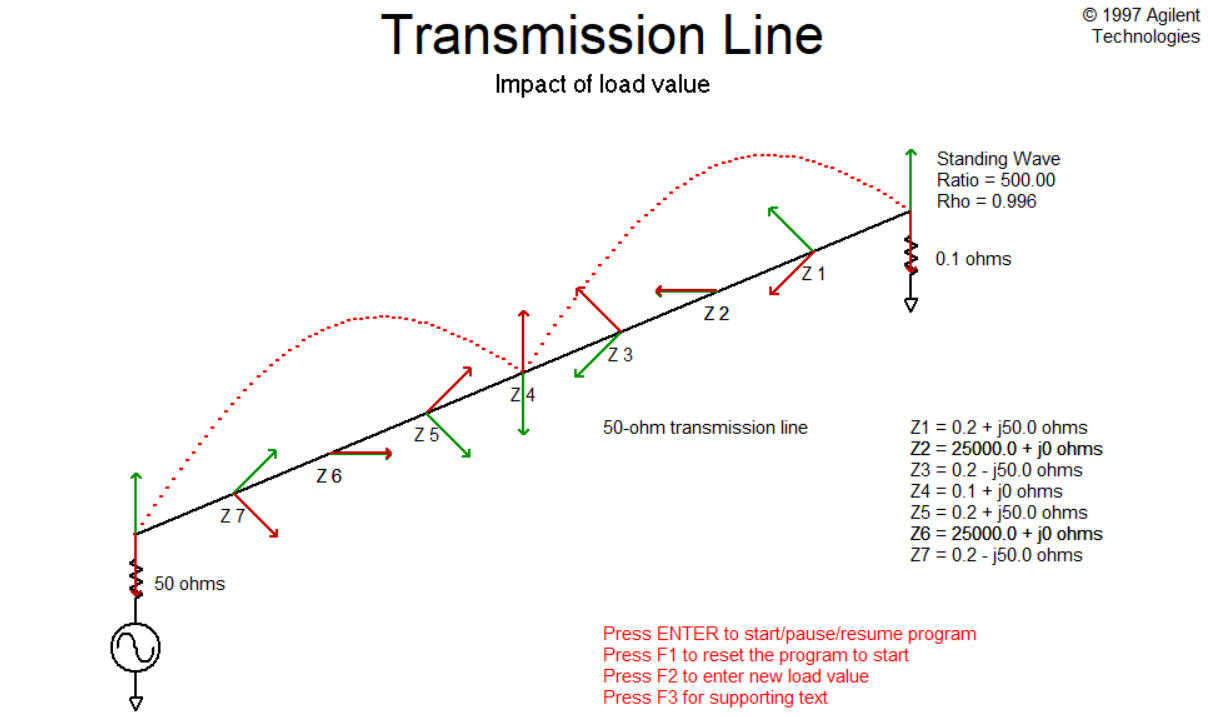I found an interesting simulator for transmission Lines. I can set a precise value for the load and then see what happens. For instance, let's suppose Z0 = 50 Ohm and let's consider these cases:
1) (almost) Open Line (the simulator allows at max 10000 Ohm for a load)
In this case there is total reflection, and the total voltage wave is a standing wave and, if I understood correctly, it is that in red.
2) (almost) Shorted Line (the simulator allows a minimum value of 0.1 Ohm)
Also in this case there is total reflection.
3) Line "slightly" mismatched (with a load of 100 Ohm)
In this case there is a partial reflection.
4) Line matched
In this case there is not reflection.
My questions are:
What do the red and green arrows represent? Why do they have those orientations?
In 3), where there is little reflection, is the total voltage wave a standing wave?
In 4), why is the red line completely flat? I think that in this case the total voltage wave is purely progressive (V+(z)), so it should be a sinusoidal wave, in my opinion.
In 4), why only green arrows?
What are the impedance's values Z1,...,Z7 in each picture?
The simulator has been taken from here, the direct link is here.




